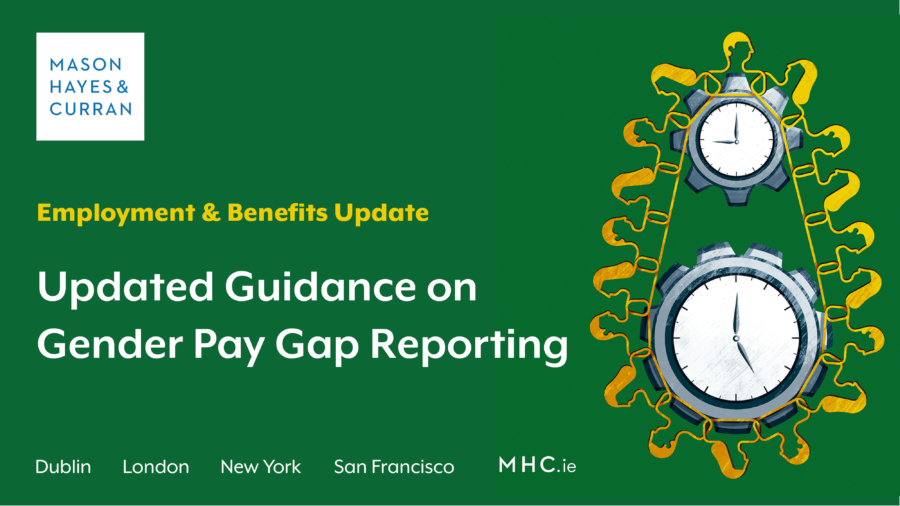Updated Guidance on Gender Pay Gap Reporting

Irish employers are keenly awaiting the regulations that will dictate how gender pay gap (GPG) reporting will be implemented in this country. Last week, the government published new guidance on what this might look like. This will help employers who come within the scope of the reporting requirements to prepare for what is likely coming down the tracks later this year.
We recently wrote about gender pay gap reporting in Ireland in the context of the newly published code of practice on equal pay and the general and increased focus on pay inequality in the workforce.
Since the Gender Pay Gap Information Act 2021 was enacted last year, employers have been eagerly anticipating the regulations that will provide the detail on how the reporting will be made. Unfortunately, we are still awaiting this. However, the recently published guidance on GPG reporting provides more clarity on how calculations and reporting should be carried out. It should be noted that this is still guidance, and we must wait for the regulations to confirm the precise legal requirements of GPG reporting in Ireland.
Guidance headlines
The main features of the guidance include:
- Confirmation that a snapshot date in June 2022 should be chosen, and the headcount of relevant employees should be recorded on that date
- The GPG reporting deadline is 6 months after the snapshot date, ie December 2022
- The reporting period is the 12-month period immediately preceding and including the snapshot date
Guidance on calculations
Based on the employee headcount on the snapshot date, and provided the Irish company comes within the reporting requirements for 2022, they will be required to produce a gender pay gap information report. To do so, the following calculations will be required:
- For each employee – the total ordinary pay, total bonus, total benefits-in-kind, and their total hours worked for the reporting period, to enable a calculation of hourly remuneration.
- Distinguish between full-time employees, part-time employees or fixed-term employees over the reporting period.
- Calculate the % of male and of female employees paid bonuses.
- Calculate the % of male and of female employees who received benefits in kind.
- Organise employees into quartiles based on hourly remuneration of male & female fulltime employees and calculate the proportions of male and female employees in each quartile.
- Calculate the mean hourly remuneration of male and female employees, then calculate the gender pay gap in mean hourly remuneration of all employees. Do a similar calculation for male and female part-time employees and male and female employees on fixed-term contracts.
- Calculate the median hourly remuneration of male and of female employees, then calculate the pay gap in median hourly remuneration of all employees. Do the same for male and female part-time employees and for male and female employees on fixed-term contracts.
- Calculate the mean bonus remuneration of male and of female employees, then calculate the pay gap in mean bonus remuneration of all employees.
- Calculate the median bonus remuneration of male and of female employees, then calculate the gender pay gap in median bonus remuneration of all employees.
The guidance provides a helpful FAQ as well as examples and definitions to assist with these calculations.
Conclusion
We advise employers to familiarise themselves with the government’s guidance containing the expected calculations and reporting requirements. It will be important for companies that fall within the scope of the GPG reporting requirement to ensure that the necessary internal systems are in place to capture the required data.
For expert guidance around ensuring full compliance with the new regime, contact a member of our Employment & Benefits team.
The content of this article is provided for information purposes only and does not constitute legal or other advice.
Share this:





